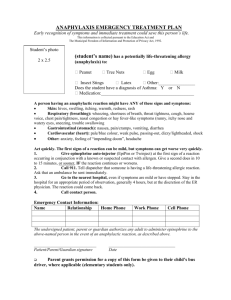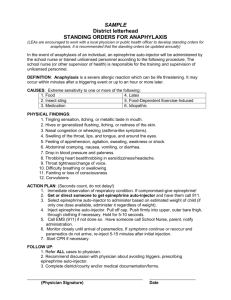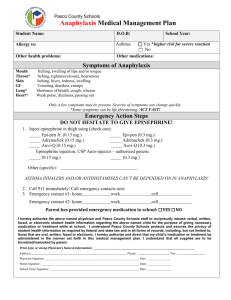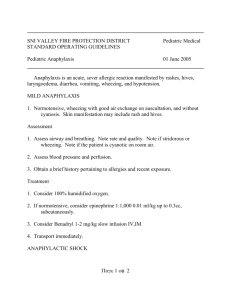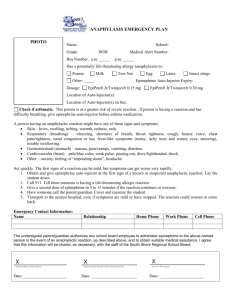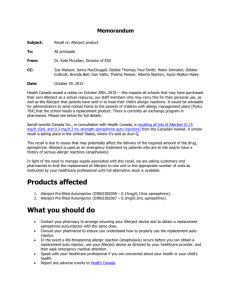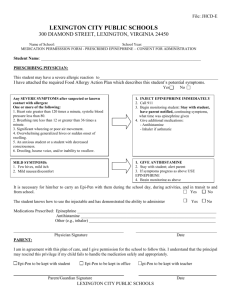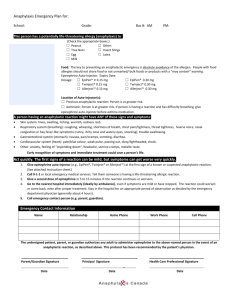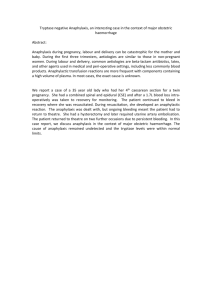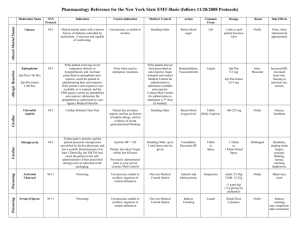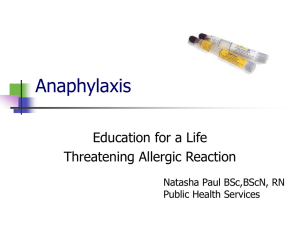Anaphylaxis Recognition & Epinephrine Auto
advertisement
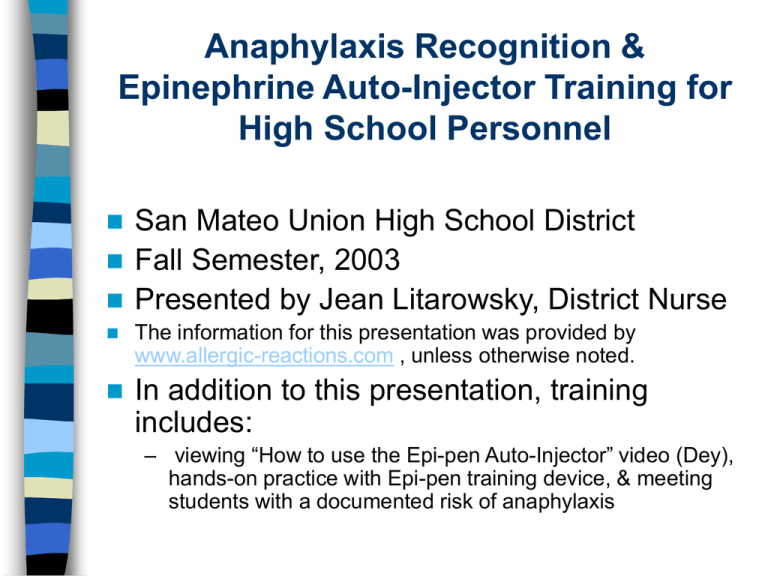
Anaphylaxis Recognition & Epinephrine Auto-Injector Training for High School Personnel San Mateo Union High School District Fall Semester, 2003 Presented by Jean Litarowsky, District Nurse The information for this presentation was provided by www.allergic-reactions.com , unless otherwise noted. In addition to this presentation, training includes: – viewing “How to use the Epi-pen Auto-Injector” video (Dey), hands-on practice with Epi-pen training device, & meeting students with a documented risk of anaphylaxis Anaphylaxis: Definition and Interesting Facts Anaphylaxis: – Is a rapid, severe allergic response – Is not always due to an obvious cause – Is not always easy to avoid, even when the cause is known – Is not always accompanied by hives The most commonly documented causes of anaphylaxis include: Food allergies Insect venom Medications Latex Exercise & “unknown” cause are less common causes of anaphylaxis The most distinctive symptoms of anaphylaxis include: Hives/itchy skin Swelling of the throat, lips, tongue, or around the eyes Difficulty breathing or swallowing Other common symptoms of anaphylaxis may include the following: [Any of these symptoms, always ask if there are “any known allergies?”] A metallic taste or itching in the mouth Generalized flushing, itching, or redness of the skin Abdominal cramps, nausea, vomiting, or diarrhea Increased heart rate, rapidly decreasing blood pressure (paleness) Anxiety or an overwhelming sense of doom Weakness, collapse, loss of consciousness Epinephrine (AKA:Adrenaline): Medication of choice for severe allergic reactions Constricts blood vessels Relaxes lung muscles to improve breathing Reverses swelling Increases heart rate – Think of how an “adrenaline rush” feels Epinephrine, continued: Available by prescription in a single-dose auto-injector called an Epi-pen Site of injection: thigh Can be given through clothing Needle should be held in place for 10 seconds Call 911 Side effects of Epinephrine include: Rapid heart rate Palpitations Sweating Nausea and vomiting Respiratory difficulty Other cardiac (heart) problems Everyone experiencing a severe allergic reaction: Is advised to have 911/emergency medical care following the administration of epinephrine One dose of epinephrine may not be enough!! – Can have a biphasic reaction: a reoccurrence requiring additional treatment California Education Code mandates: (Information retrieved online at www.leginfo.ca.gov) That minimum standards of training for the administration of epinephrine in schools through use of an auto-injector (Epi-pen) includes CPR instruction and certification Techniques for recognizing symptoms Standards and procedures for storage and emergency use of epinephrine auto-injectors Emergency follow-up procedures Written materials covering the above Students in SMUHSD with a documented risk of anaphylaxis : Will be advised to carry an auto-injector (Epipen) and be allowed to self-medicate as needed (if capable). Will be sent an Anaphylaxis Care Plan to be completed. – Includes instructions & authorization for use of medication from MD and parent (example of approved care plan attached) Will be asked to provide an extra Epi-pen to be stored in the Health Office in an unlocked storage site. Summary of SMUHSD response to symptoms of anaphylaxis for students with documented risk: REACT QUICKLY: radio communication/alert Allow student to self-medicate when possible If incapable, administration of Epi-pen by trained personnel Call 911-notify EMS if Epinephrine has been given Call parent, &/or others as directed on care plan or emergency card Document event & place in health file
